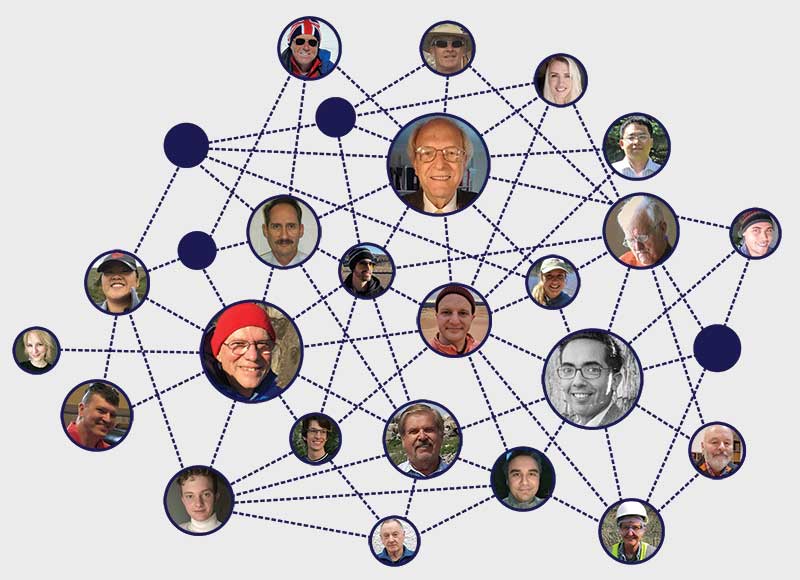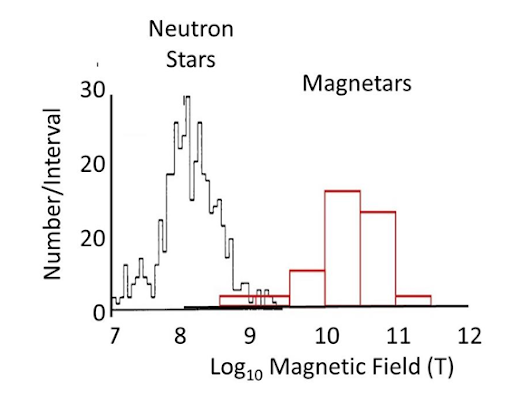 Quark Nuggets and Magnetar Pulsars
Quark Nuggets and Magnetar Pulsars
What are Quark Nuggets?
 Quark Nuggets and Magnetar Pulsars
Quark Nuggets and Magnetar Pulsars
What are Quark Nuggets?

MQN Guide
Much like GPS guides one along a pathway to a destination, we present 8 “waypoints” of relevant information to guide readers through the overall concept.
Peer Reviewed Science
Is there solid science supporting Magnetized Quark Nuggets as a candidate for dark matter?
Dark Matter
Tell me about dark matter and the Standard Model of Cosmology.
Normal Matter and Quarks
Tell me about normal matter, quarks, and the Standard Model of Particle Physics.
Quark Nuggets and Magnetar Pulsars
What do Magnetar Pulsars have to do with Quark Nuggets?
Aggregation vs. Decay
Since Quark Nuggets are not observed in high-energy accelerator experiments, aren’t they excluded as stable particles and therefore cannot be dark matter?
Detection
If MQNs exist, how can they be detected and have they been detected?
Capture
Since MQNs should be indestructible, can their passage through the Sun slow them down enough to make them collectable?
Applications
If MQNs can be collected, what applications might they enable?

People Make Progress
Quark nuggets are composed of Up, Down, and Strange quarks in essentially equal numbers. They are also called strangelets, nuclearites, Axion Quark Nuggets (AQNs), slets, and Macros, in addition to Magnetized Quark Nuggets (MQNs). Since Bodmer (1971)[1] suggested collection of Up, Down, and Strange quarks should be stable, many theorists have shown that large aggregations of this combination of quarks should be even more stable than protons and neutrons.
Quark nuggets have not been observed in experiments with high-energy accelerators because single Up-Down-Strange particles would decay in about 10 picoseconds, before they could be observed. Consequently, the search for particles that could be dark matter has focused on theoretical candidates beyond the Standard Model of Particle Physics. Since experimental searches for such particles have not produced a dark-matter candidate, theoretical research of candidates consistent with the Standard Model have increased in recent years, as illustrated by the plot of number of publications per year mentioning quark nuggets versus time.

Most papers on quark nuggets have not explicitly included the effects of magnetic field. Tatsumi (2000)[2] developed a theory showing quark nuggets may explain the extreme magnetic fields of magnetar pulsars, which have magnetic fields ~300 times that of neutron star pulsars, as shown in the two histograms. Clearly magnetars are not just big neutron stars. Tatsumi’s theory says that the core of each magnetar is a ferromagnetic liquid of nuclear density, in other words, an MQN.
The ferromagnetic nature of MQNs is the basis of our model of aggregation in the early universe. Therefore, magnetars are the first observational evidence consistent with MQNs.

Neutron Stars: Taylor, J. H., Manchester, R. N., and Lyne, A. G. Catalog of 558 pulsars. Astrophys. J. Sup. 88, 529-568 (1993).
Magnetars: Olausen, S. A., Kaspi, V. M. The McGill magnetar catalog. Astrophys. J. Sup. 212, 1, 6, 22 pp. (2014).
MQN Guide
Much like GPS guides one along a pathway to a destination, we present 8 “waypoints” of relevant information to guide readers through the overall concept.
Peer Reviewed Science
Is there solid science supporting Magnetized Quark Nuggets as a candidate for dark matter?
Dark Matter
Tell me about dark matter and the Standard Model of Cosmology.
Normal Matter and Quarks
Tell me about normal matter, quarks, and the Standard Model of Particle Physics.
Quark Nuggets and Magnetar Pulsars
What do Magnetar Pulsars have to do with Quark Nuggets?
Aggregation vs. Decay
Since Quark Nuggets are not observed in high-energy accelerator experiments, aren’t they excluded as stable particles and therefore cannot be dark matter?
Detection
If MQNs exist, how can they be detected and have they been detected?
Capture
Since MQNs should be indestructible, can their passage through the Sun slow them down enough to make them collectable?
Applications
If MQNs can be collected, what applications might they enable?

People Make Progress
Quark nuggets are composed of Up, Down, and Strange quarks in essentially equal numbers. They are also called strangelets, nuclearites, Axion Quark Nuggets (AQNs), slets, and Macros, in addition to Magnetized Quark Nuggets (MQNs). Since Bodmer (1971)[1] suggested collection of Up, Down, and Strange quarks should be stable, many theorists have shown that large aggregations of this combination of quarks should be even more stable than protons and neutrons.
Quark nuggets have not been observed in experiments with high-energy accelerators because single Up-Down-Strange particles would decay in about 10 picoseconds, before they could be observed. Consequently, the search for particles that could be dark matter has focused on theoretical candidates beyond the Standard Model of Particle Physics. Since experimental searches for such particles have not produced a dark-matter candidate, theoretical research of candidates consistent with the Standard Model have increased in recent years, as illustrated by the plot of number of publications per year mentioning quark nuggets versus time.

Most papers on quark nuggets have not explicitly included the effects of magnetic field. Tatsumi (2000)[2] developed a theory showing quark nuggets may explain the extreme magnetic fields of magnetar pulsars, which have magnetic fields ~300 times that of neutron star pulsars, as shown in the two histograms. Clearly magnetars are not just big neutron stars. Tatsumi’s theory says that the core of each magnetar is a ferromagnetic liquid of nuclear density, in other words, an MQN.
The ferromagnetic nature of MQNs is the basis of our model of aggregation in the early universe. Therefore, magnetars are the first observational evidence consistent with MQNs.

Neutron Stars: Taylor, J. H., Manchester, R. N., and Lyne, A. G. Catalog of 558 pulsars. Astrophys. J. Sup. 88, 529-568 (1993).
Magnetars: Olausen, S. A., Kaspi, V. M. The McGill magnetar catalog. Astrophys. J. Sup. 212, 1, 6, 22 pp. (2014).
Quark nuggets are composed of Up, Down, and Strange quarks in essentially equal numbers. They are also called strangelets, nuclearites, Axion Quark Nuggets (AQNs), slets, and Macros, in addition to Magnetized Quark Nuggets (MQNs). Since Bodmer (1971)[1] suggested collection of Up, Down, and Strange quarks should be stable, many theorists have shown that large aggregations of this combination of quarks should be even more stable than protons and neutrons.
Quark nuggets have not been observed in experiments with high-energy accelerators because single Up-Down-Strange particles would decay in about 10 picoseconds, before they could be observed. Consequently, the search for particles that could be dark matter has focused on theoretical candidates beyond the Standard Model of Particle Physics. Since experimental searches for such particles have not produced a dark-matter candidate, theoretical research of candidates consistent with the Standard Model have increased in recent years, as illustrated by the plot of number of publications per year mentioning quark nuggets versus time.

Most papers on quark nuggets have not explicitly included the effects of magnetic field. Tatsumi (2000)[2] developed a theory showing quark nuggets may explain the extreme magnetic fields of magnetar pulsars, which have magnetic fields ~300 times that of neutron star pulsars, as shown in the two histograms. Clearly magnetars are not just big neutron stars. Tatsumi’s theory says that the core of each magnetar is a ferromagnetic liquid of nuclear density, in other words, an MQN.
The ferromagnetic nature of MQNs is the basis of our model of aggregation in the early universe. Therefore, magnetars are the first observational evidence consistent with MQNs.

Neutron Stars: Taylor, J. H., Manchester, R. N., and Lyne, A. G. Catalog of 558 pulsars. Astrophys. J. Sup. 88, 529-568 (1993).
Magnetars: Olausen, S. A., Kaspi, V. M. The McGill magnetar catalog. Astrophys. J. Sup. 212, 1, 6, 22 pp. (2014).
MQN Guide
Much like GPS guides one along a pathway to a destination, we present 8 “waypoints” of relevant information to guide readers through the overall concept.
Peer Reviewed Science
Is there solid science supporting Magnetized Quark Nuggets as a candidate for dark matter?
Dark Matter
Tell me about dark matter and the Standard Model of Cosmology.
Normal Matter and Quarks
Tell me about normal matter, quarks, and the Standard Model of Particle Physics.
Quark Nuggets and Magnetar Pulsars (above)
What do Magnetar Pulsars have to do with Quark Nuggets?
Aggregation vs. Decay
Since Quark Nuggets are not observed in high-energy accelerator experiments, aren’t they excluded as stable particles and therefore cannot be dark matter?
Detection
If MQNs exist, how can they be detected and have they been detected?
Capture
Since MQNs should be indestructible, can their passage through the Sun slow them down enough to make them collectable?
Applications
If MQNs can be collected, what applications might they enable?


